Early this morning, the Great Eastern Women’s Run, the largest all-women run in South East Asia, took place at the iconic Singapore Sports Hub, with more than 14,500 ladies participating in the running event.
Click here for my race review of Great Eastern Women’s Run 2019.
Click here to view the Great Eastern Women’s Run 2018 photos in the photo gallery.
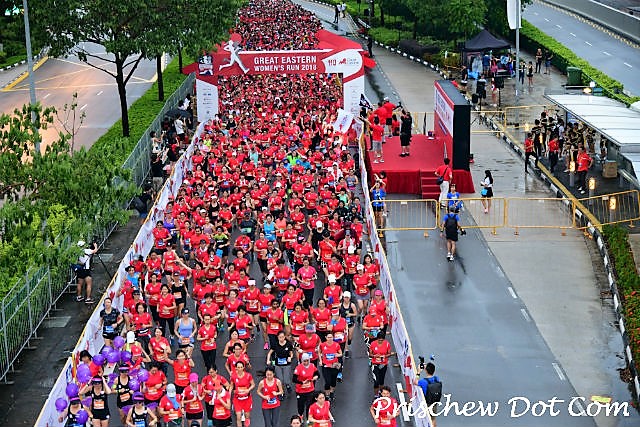
Organised in conjunction with event design house Infinitus Productions, the 2018 event had marked its 13th year in unifying women in health and fitness, and featured brand new routes, with participants enjoying a scenic run, passing through some of Singapore’s most iconic landmarks, and ceremoniously finishing at the National Stadium.
Various categories available
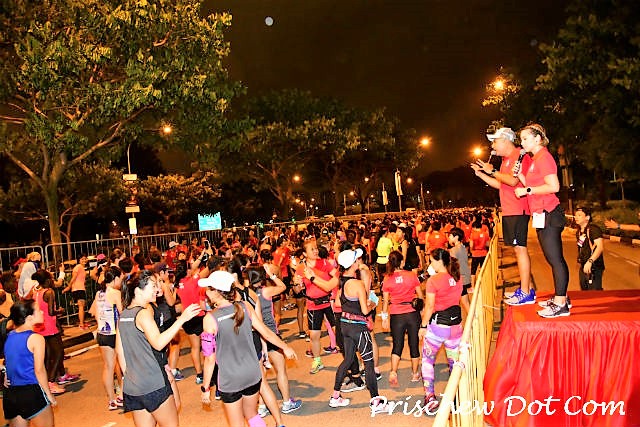
This year’s event, which was taking place for the first time at the Sports Hub, had featured categories to cater to various runners of all abilities – and these included the 21.1km Half Marathon, 10km Competitive Run and 5km Live Great Fun Run – all of which had been brought back from past editions.
And there was also the 2km Mummy+Me and 110-metre Princess Dash for the young ones, as well as a brand new category, the 110-metre Sprint Challenge for runners who prefer to run short distances instead.
The latter had been introduced to celebrate Great Eastern’s 110th anniversary and this was the first time that a mass running event in Singapore had organised a sprint category for those aged 13 and above.
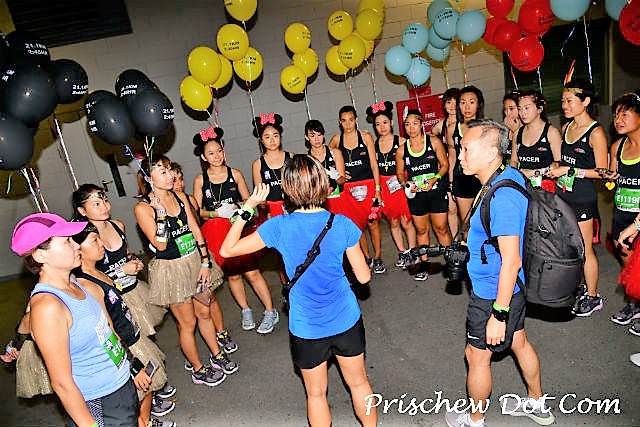
And the new Sprint challenge had attracted a great amount of interest from schools wanting to give their track & field runners more competition exposure, too.
Ran in both the 21.1km Race and the 110-metre Sprint
For me, I participated in both the 21.1km Half Marathon category as well as the 110-Metre Sprint Challenge – in order to experience the brand new category for myself.
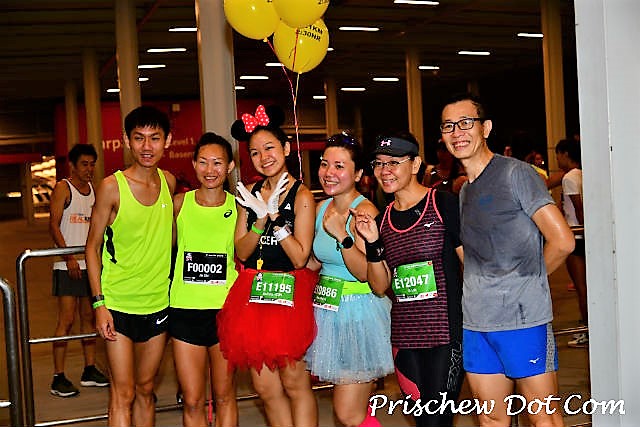
As the 21.1km event had been scheduled to flag off at 5.15am in the morning, I headed down to the race site, reaching the Sports Hub at about 4.15am.
Upon getting there, I collected my media passes and then hung around for a while, to put myself in the right frame of mind for the run ahead.
An Impending Thunderstorm
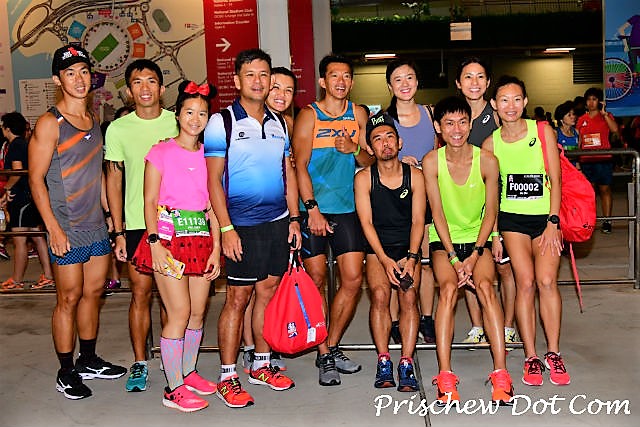
However, I had noticed some thunder and lighting illuminating the skies, and even as I had been preparing myself to run, this had made me worried at whether the run was still going to take place.
At 4.45am, an SMS message arrived, stating that the run would flag off as planned, so I made my way into the start pen.
The two emcees, Ross Sarpani and Kelly Latimer, hyped up the crowd with their energy and enthusiasm, as we were waiting for the flag-off.
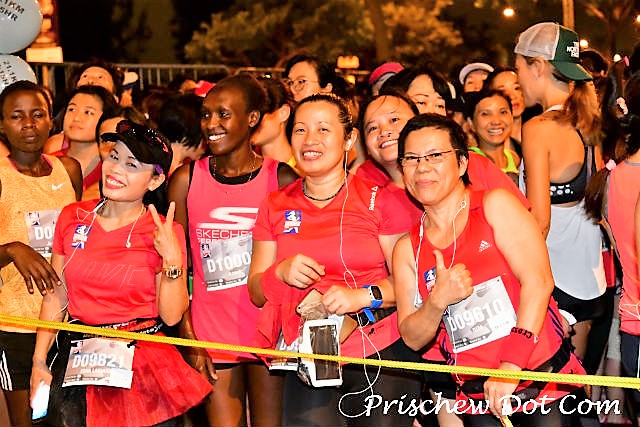
In the meantime, there were rumblings of thunder and flashes of lighting in the sky. As well, I could also feel a slight drizzle oncoming.
Race to be Postponed
However just as the race was about to begin, a weather warning from the National Environmental Agency arrived, to signal that there was a Category One thunderstorm alert in the area. This was announced by the two emcees.
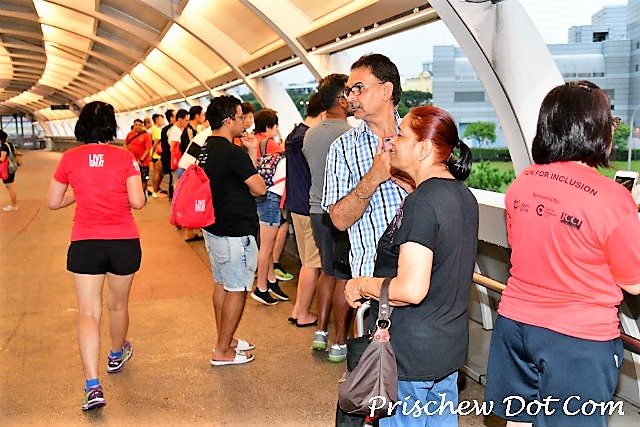
This was despite the fact that it had not begun raining yet at the vicinity of the Singapore Sports Hub.
So instead of running, we were all immediately instructed to turn back and seek shelter.
The air-conditioned National Stadium seating area was also opened up for runners to sit down while waiting out the rain.
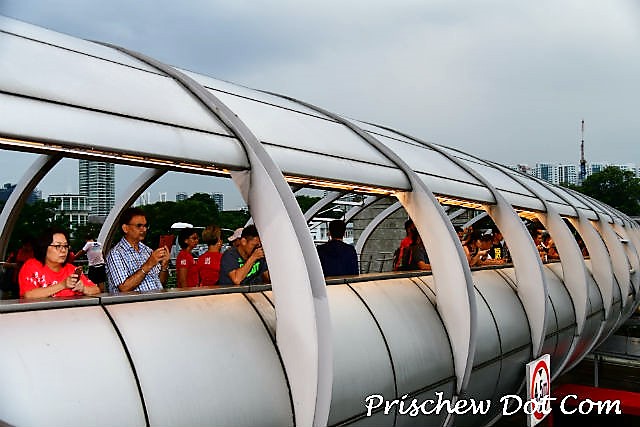
It was the right decision on the part of the organisers.
That was because about five to ten minutes after that, the rain came crashing down relentlessly.
It was a very heavy downpour so I thanked my lucky stars that I was not out there at the moment the skies had opened up.
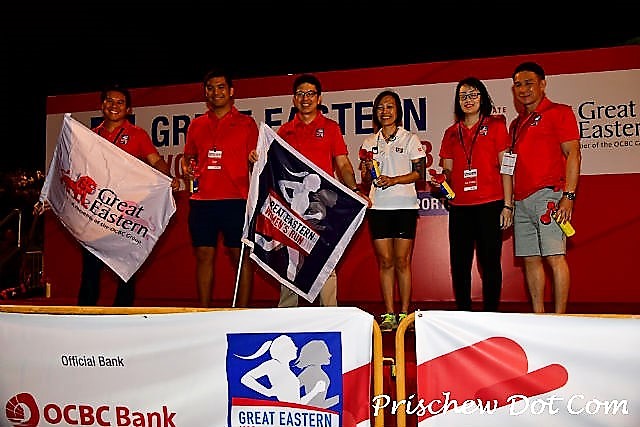
In terms of running though, it was a bummer, because I had been all geared up and ready to go, but then, looking outside, there was no way that I was going to be able to run in that type of weather.
Thunderstorm came and went
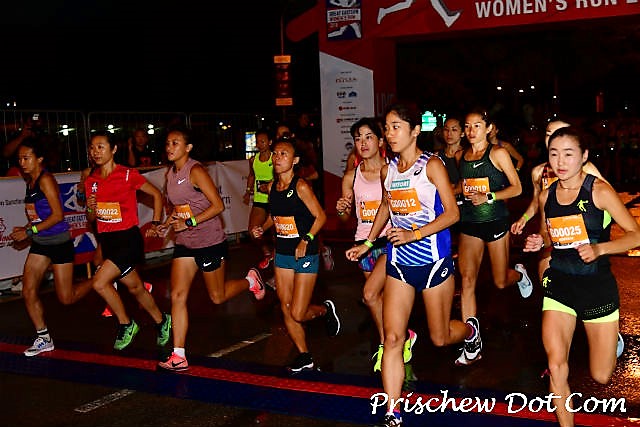
Fortunately for us though, the thunderstorm came and went rather quickly, and thankfully, we were given the all-clear for running, but at a later flag-off time.
The 21.1km run was re-scheduled for 6.15am. And the other race categories were also postponed as a result of this, too.
The new flag-off times were also quickly made known to runners via the event’s Facebook page.
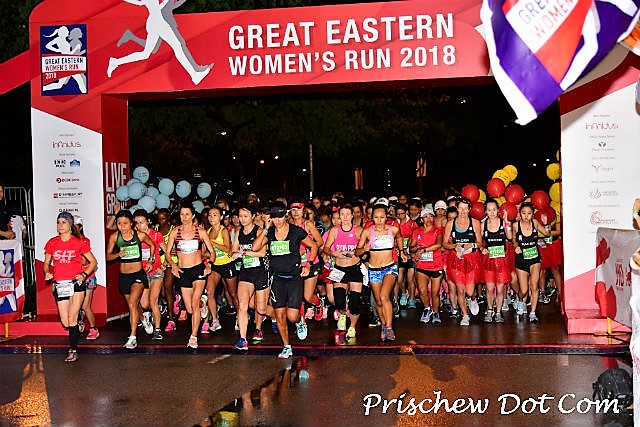
However for those who may have had to rush off after the event though, the organisers gave these runners an option to just go ahead and collect their finisher entitlements from 6.30am onwards. This had been made known to every runner via the SMS system.
But I feel that picking up the finisher items would be meaningless if I do not run in order to earn them. So I chose to go ahead and still run the 21.1km event.
And I think that most runners probably had felt this way too, as everyone headed out back to the start pen, once the announcement on the new flag-off time had been made.
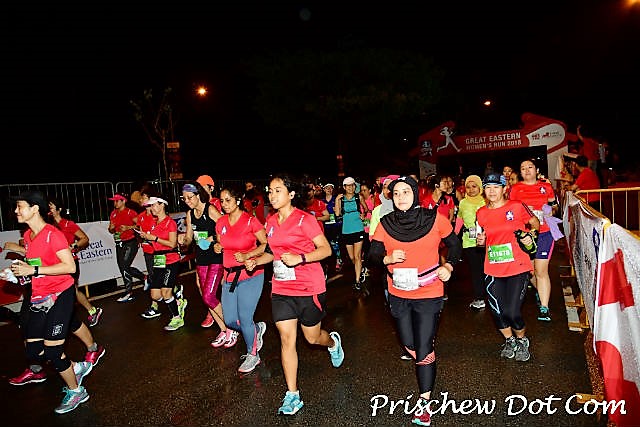
Weather setback was managed well
I thought that this unexpected weather setback had been managed well by the organisers, with decisive actions and prompt SMS updates to tell everyone what was happening, as well as public announcements being made punctually via Facebook too so that those runners at home would not be kept in the dark either.
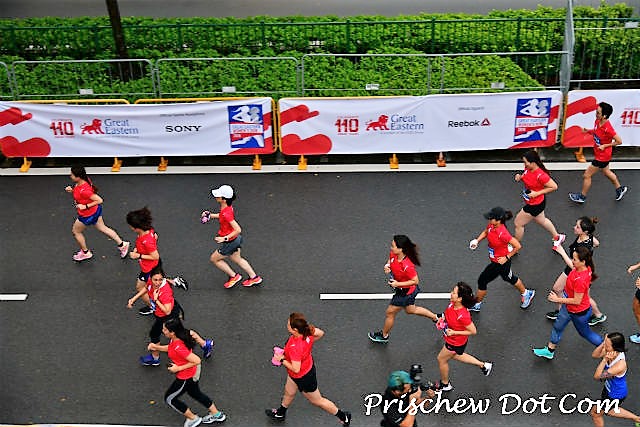
Other runners also felt the same, about the weather woes. Said Eileen Ho, 39, an airline cabin crew, “I think that it was a good decision by the organisers. They stopped the 21.1km run in time to make us go back to the shelter and even opened the seats up for runners to rest while waiting for the rain to pass. The management of the event was one of the best things today, and their precision decision was the right move, too.”
Time for Flag Off
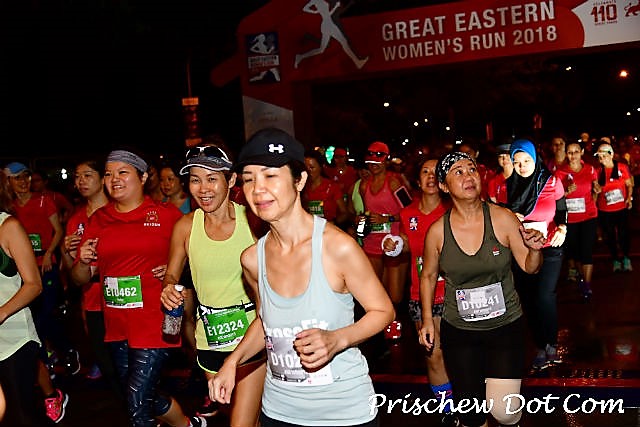
When I got back to the start pen, the flag-off party waiting on stage had included the Guest of Honour Grace Fu, Minister for Culture, Community and Youth, as well as Lim Biow Chun, Member of Parliament (Mountbatten) and Deputy Speaker of Parliament, as well as Great Eastern top management group helmed by Group Chief Executive Officer Khor Hock Seng.
After a few more short announcements by both Ross and Kelly in an attempt to hype up the crowd again – with the limited minutes they had before the flag-off, the elite group of runners were then flagged off sharply at 6.15am with the rest of us setting off on our 21.1km journey, about five minutes after that.
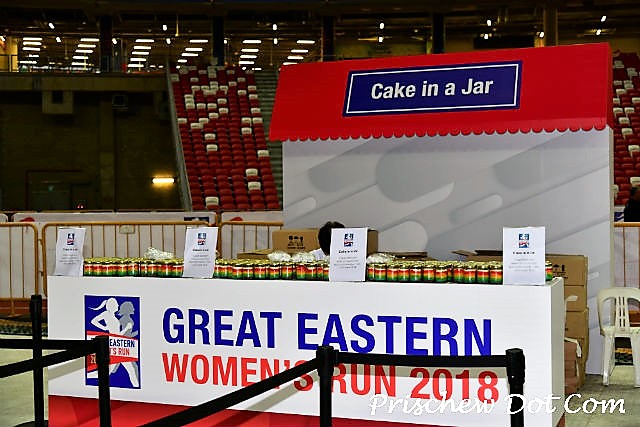
My Turn to Run
I had been near the front of the start pen at the time, so I began my run at about 6.20am.
Race Route
The 21.1km route took us from the Sports Hub down Nicoll Highway and then past landmarks such as the Singapore Flyer, Merlion, One Fullerton, Gardens By the Bay and the Marina Bay Golf Course. It was a scenic city route.
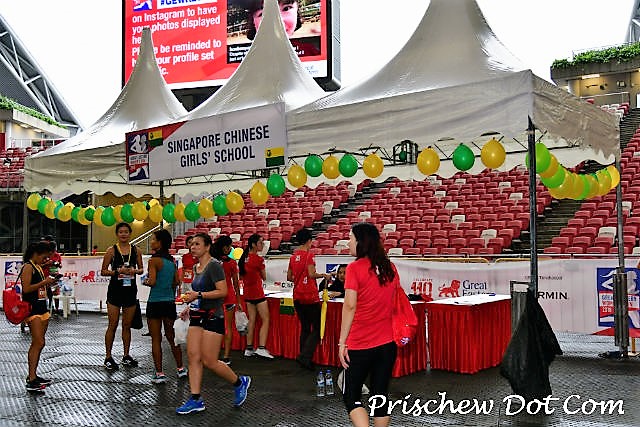
And added Eileen, “Compared to previous editions of this race which flagged off at The Float, today’s rout was something fresh and different.”
Heart Rate Under Control
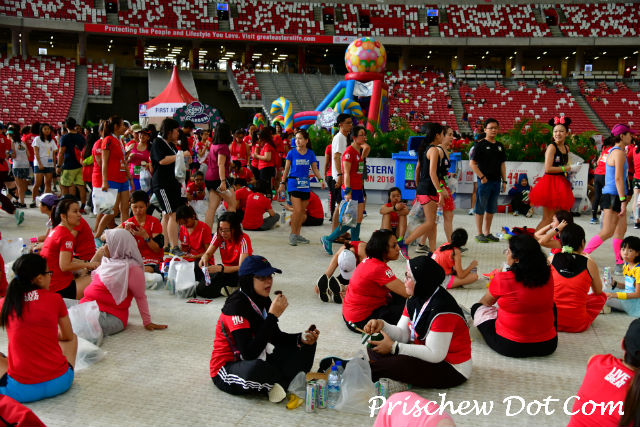
I had started running at what had felt like a steady pace, but despite my best efforts to keep my heart rate under control, it began to rise very quickly. I admit that I was surprised by this, because I thought that I had not been running that fast.
Nonetheless, I tried not to let my heart rate reading go overboard, controlling my pace so as to maintain my heart rate within the Steady Zone.
Due to the later flag off, it began to get light pretty quickly. So this meant that there weren’t any dark areas along the route, as a result.
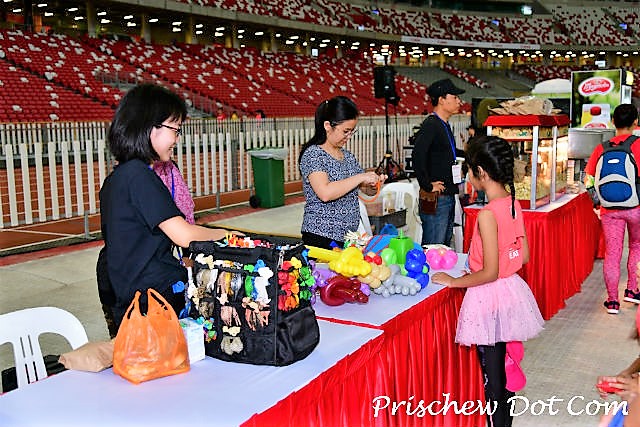
I was listening to my favourite songs with my trusty Jaybird RUN earbuds to keep myself going, and at the same time, I looked round my surroundings, soaking up the sights and sounds of Singapore’s urban landscape in the early morning, and marvelling at the beautiful man-made structures that we have.
This had helped to keep my mind off the running and the kilometres passed by quite quickly.
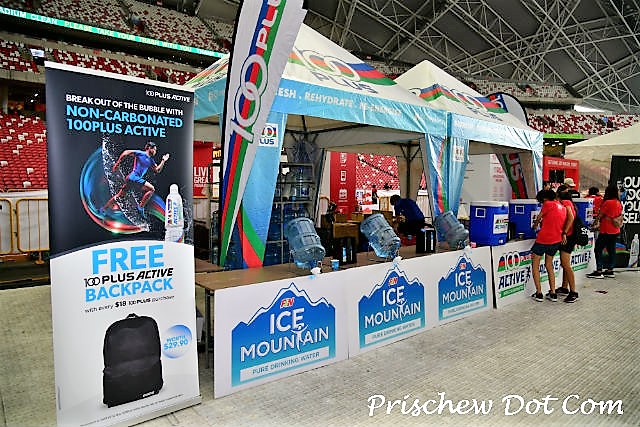
Great Weather
The weather was great for running. Though the thunderstorm had passed, there was a light drizzle and it also felt pretty windy at times, too.
Agreed Eileen, “The weather was great. It was cooling, there was a slight drizzle but it was fun and I really loved that.”
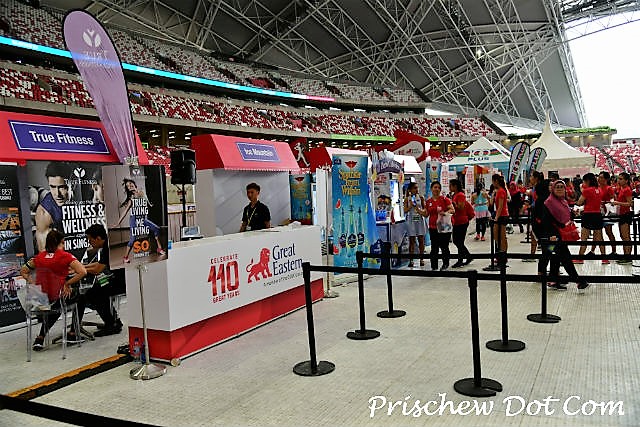
This helped to cool me down and made the run feel quite pleasant, but unfortunately there was nothing that I could do about the tropical humidity, though.
Good Hydration
I spotted the first hydration point after just over 2km of running. Along the route, I counted nine hydration points altogether. I felt that this was definitely adequate to cater to the needs of the half marathon runners.
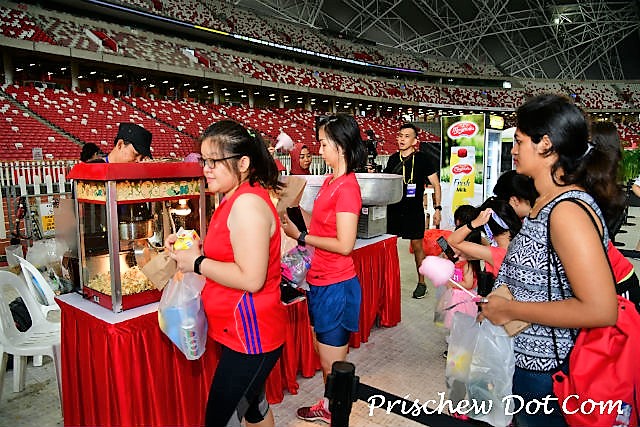
Most of them were serving both water and isotonic but a couple were providing runners with water only. I took the 100PLUS isotonic drink whenever I saw it, as I knew that I needed the electrolytes to fuel my running.
Said Cheryl Chia, 43 and working in customer service, “The hydration was more than enough.”
As well, there was one banana station between the 13km to 14km mark. This was good, as some runners may want proper food rather than gels, to replenish their depleted carbohydrates.
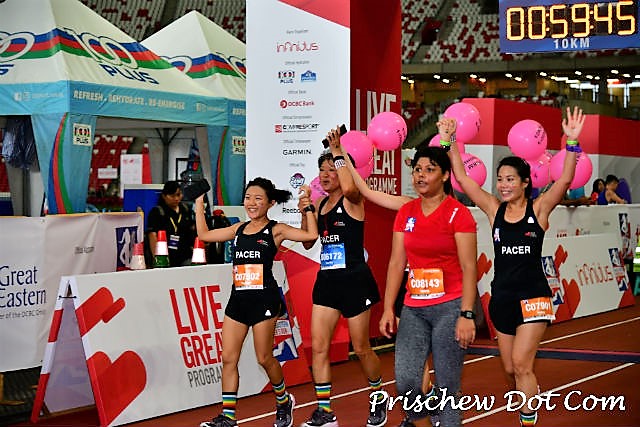
However I did not take one though, because whole bananas were being provided, and I didn’t want to peel a banana in the middle of the run.
Legs getting heavy
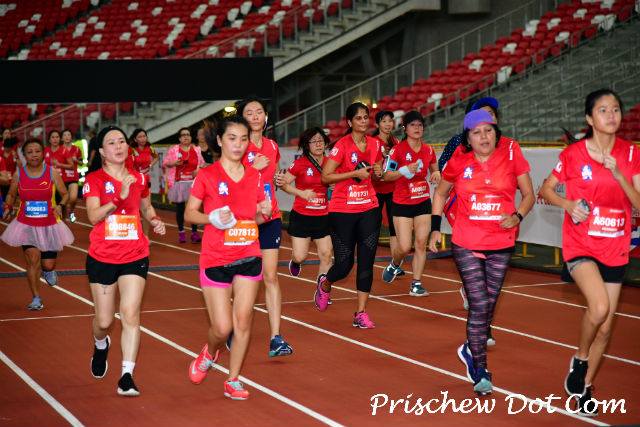
I was running strong till roughly the midway point of the half marathon, but after that, I could feel my legs getting progressively heavy.
Usually I don’t get heavy legs when I run a half marathon, so it had actually been a bit of a surprise today.
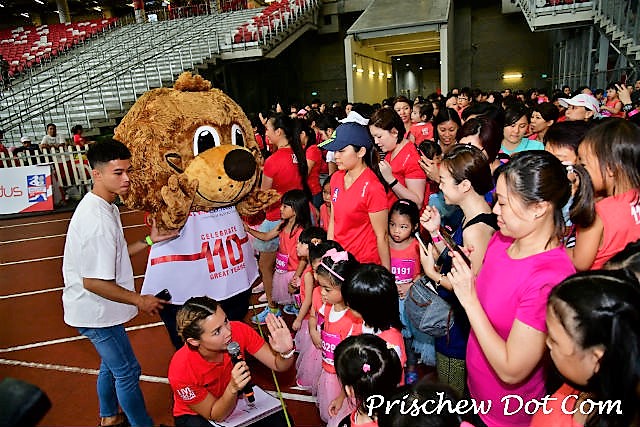
But it could have been possibly because I have not fully recovered from the Berlin Marathon last month – before taking on this race.
So I made the decision to slow down and that helped somewhat with my legs in terms of finishing the race.
But it had felt quite demoralising to see groups of pacers passing me though. Whenever this happened, I did make a futile attempt to try and keep up with them, but to no avail.
Kilometre Markings and Signages
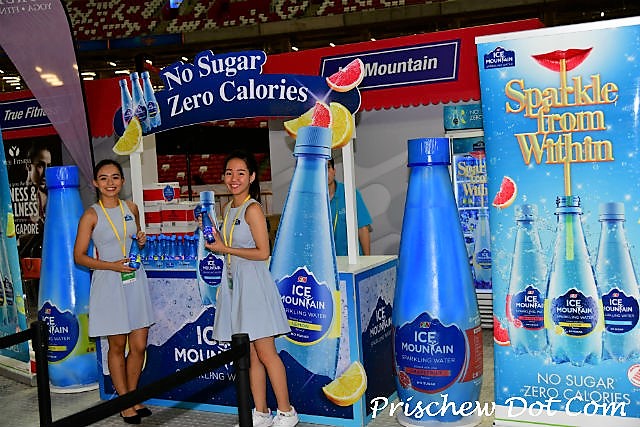
For the kilometre markings along the way, I thought that these were quite accurate when I compared them with my GPS watch.
Having accurate kilometre signages is one of the key things that I look out for in a race, so I am glad that the Great Eastern Women’s Run organisers had delivered well in this aspect.
Most of the direction signages along the way were also good, telling runners exactly when to make a u-turn and when to go straight, and so on. But there was one area towards the end of the race which I thought was a little confusing.
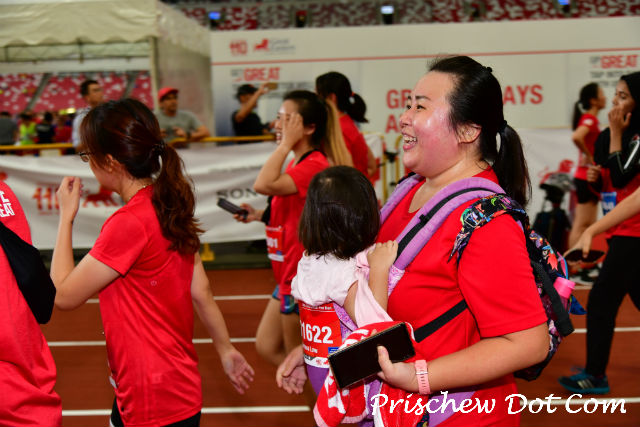
This had been in the final kilometre of the 21.1km event near the Kallang Practice Track area, and there were two pathways – one was a short, direct route into the Sports Hub stadium and the other one was a longer detour to the same ending point.
However it was not made clear which category of runners were supposed to be taking which route. So I had to make a guess for myself; I followed the crowd and ran the longer route, which had been the correct decision based on the distance of my GPS at the end of my 21.1km run.
There had been a couple of marshals stationed at this checkpoint, but I felt that they could have done their job better too, to eliminate confusion.
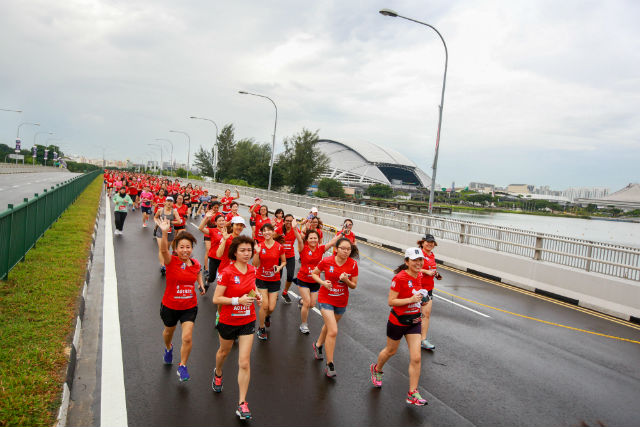
Photo credit to GEWR 2018.
Agreed Tan Sin Yee, 35, a Logistics Executive, “When we came back to the stadium, it was not clear about the direction or the route. That made things a bit confusing.”
That said, I felt that the marshals along the rest of the route mostly did do their job in leading the masses of runners in the right direction, but I did see a couple of marshals who were fast asleep, though.
However, I later found out that some of the race leaders had been sent the wrong way, with several of them even clocking a total distance of between 25km to 29km – in the 21.1km category.
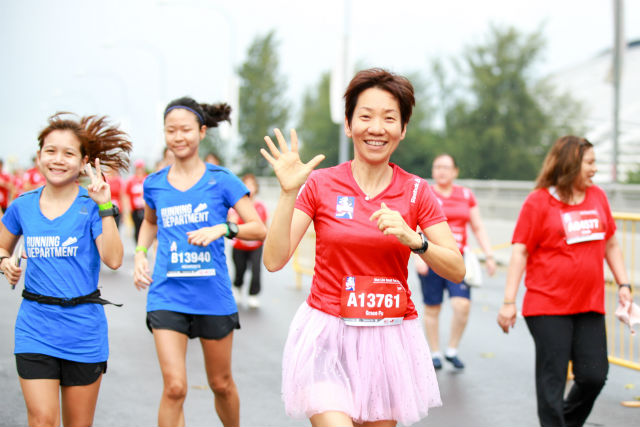
Photo credit to GEWR 2018.
Congestion and Bottlenecks
While there were also no bottlenecks along the way and the race route was generally quite smooth which helped me to maintain my pace, I also bumped into walkers from the shorter races in the final few hundred metres of my 21.1km event.
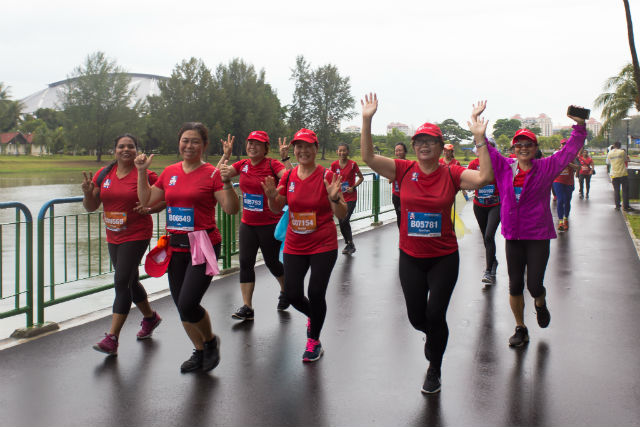
Photo credit to GEWR 2018.
They were crowding the pathways around the Sports Hub and I had to navigate and find ways to get around them, despite the fact that my legs were feeling tired.
This was a bit of an inconvenience as I had to consciously try to avoid bumping into people, but it was probably caused by the fact that the flag off times for the various race categories had been lumped together because of the initial 21.1km delay.
21.1km Race ends inside the Stadium
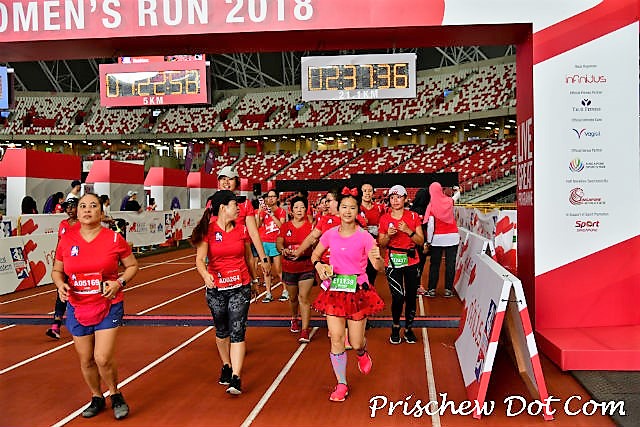
The race ended inside the National Stadium, where we were greeted by a few spectators cheering us on.
I love the feeling of going into the Stadium to end a race, because this always makes me feel as though I am a national athlete and that I am representing my country.
Finisher Entitlements
Upon reaching the finish line of my 21.1km race, I collected my finisher entitlements.
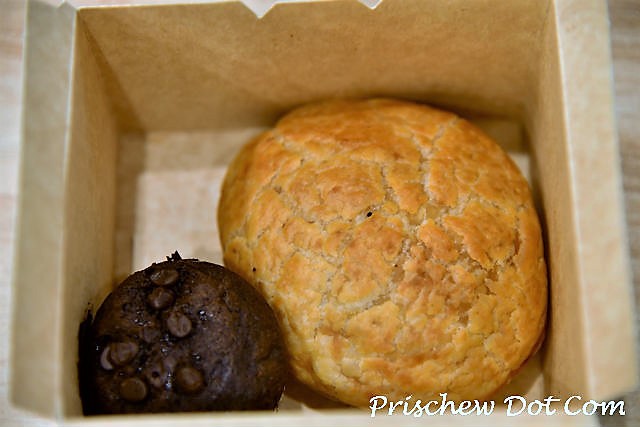
These included a breakfast box consisting of a chicken pie and a chocolate muffin both courtesy of Polar, as well as my finisher medal and finisher tee shirt, a banana, bottle of water and a can of 100PLUS isotonic drink.
My 110-Metre Sprint
Then after that, I headed over to the far end of the National Stadium track, where the 110-Meter Sprint category was taking place, for my second race of the day.
I had originally been slated for an 8.30am-9am time slot to run this, but due to the delays of all the earlier categories, I was able to get myself into the 110-metre Sprint shortly after 9am.
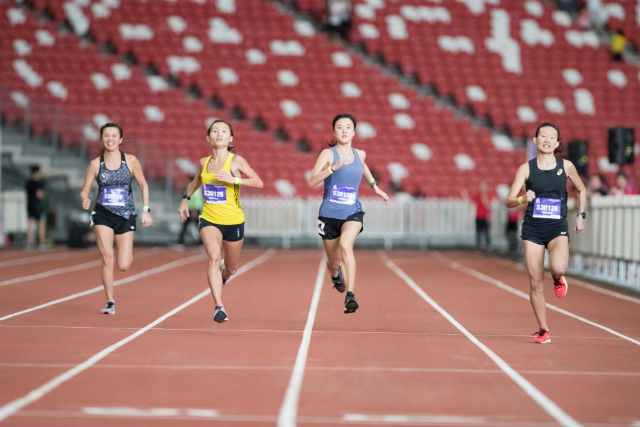
Photo credit to GEWR 2018.
This short event was a race that I had been quietly anticipating because even though I run regularly, the last time that I had done a sprint was during my secondary school sports days many years ago, so I did not quite know what to expect from this run.
Registration
After registering myself, I was allocated to Lane 9. Apparently the track lanes at the National Stadium run from 2 to 9, which I had thought was a little bit unusual.
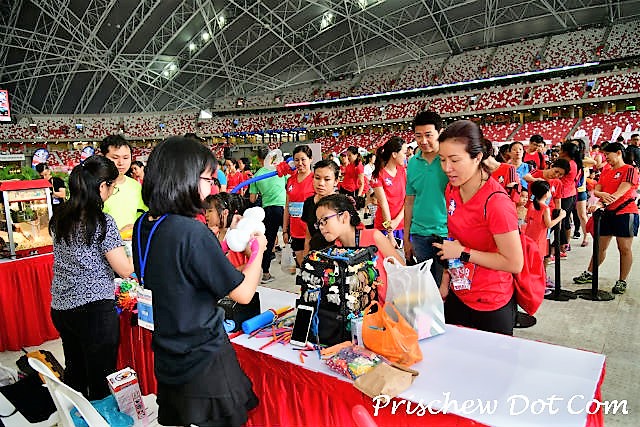
Registering for this had been a pretty fuss-free and easy affair where the organisers had simply ticked my name off from the printed name-list.
It was quite intimidating though, when I had been preparing for my sprint, and I saw some young school runners putting on their track spikes and warming themselves up for the event. They looked stronger, fitter and more ready for the event than I had felt at that point in time.
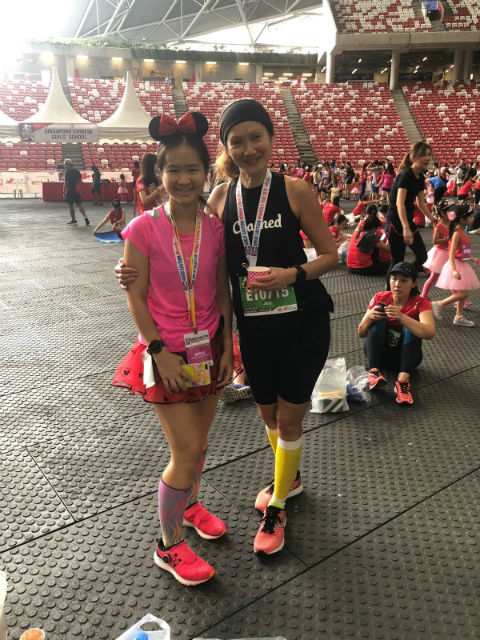
I watched a couple of earlier rounds of sprinters go before me, then it was my turn.
So I walked out on the National Stadium track and my bib number was checked against my name, for confirmation of my identity.
In my wave were a few school track and field sprinters and their competition poker faces were quite intimidating to me.
However there were also a couple of older runners, whom I felt that I could at least beat.
My only goal was to not come last in my wave.
Ready… Steady… Go!
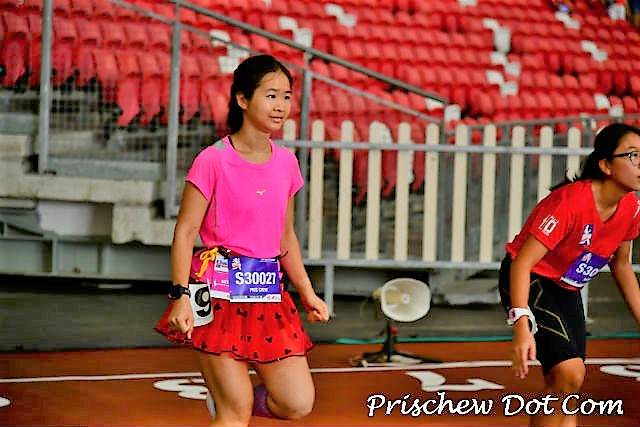
After a few seconds of warming myself up right there on the track, the commentator announced the words, ‘On your mark…!’
As part of my training with Coached, I have done fast speed accelerations towards the end of some of my runs, so I tried to think about this 110-Metre sprint as simply being one of those sessions.
However that failed though, because my heart was pounding and the tension was building up inside me.
Then the gun went, and we were off.
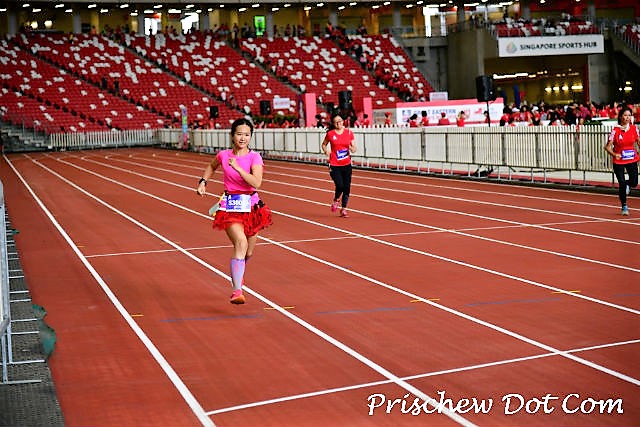
Knowing that there was nothing to lose, I ran as fast as I could, and I finished fourth in my wave.
The school track and field runners were way ahead of me, but I suppose that my performance was not too shabby though, considering that I had not sprinted since my school days and that I had not really trained my speed, for this short event.
An Enjoyable Experience
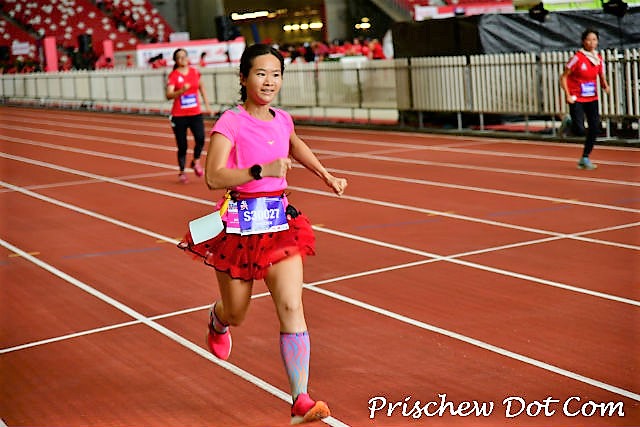
As I headed over to the tent after my sprint to collect my second set of finisher entitlements – the ones for this category: a breakfast box, banana and a medal, I felt that the 110-Metre sprint had definitely been a good experience that I had enjoyed.
Perhaps I may have lost some of my speed from my primary and secondary school days, due to my focus on long distance running lately, but at least I did not come last in my wave.
As well, running in the 110-Metre Sprint also brought back some feelings of nostalgia from my school Sports Day events.
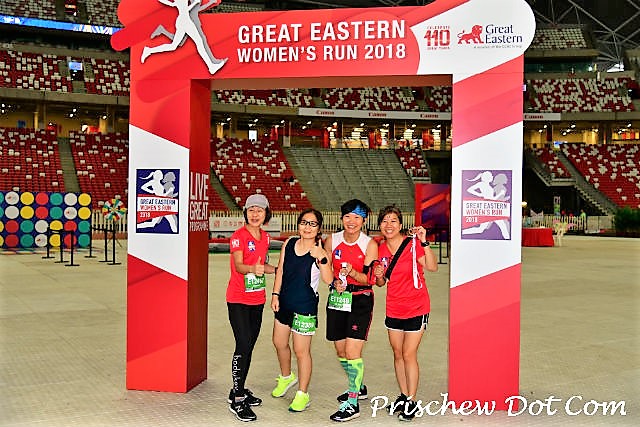
I am glad that I decided to give this category a try and I do not have any regrets. This is despite the fact that at the start line of the 110-Metre race, my legs were a bit achy after having just completed 21.1km.
And it was also good to find out where I’m now placed in terms of sprinting, based on my current level of fitness.
Also taking part in the 110-Metre Sprint had been Toh Lay Keng, who, likewise, had enjoyed her experience.
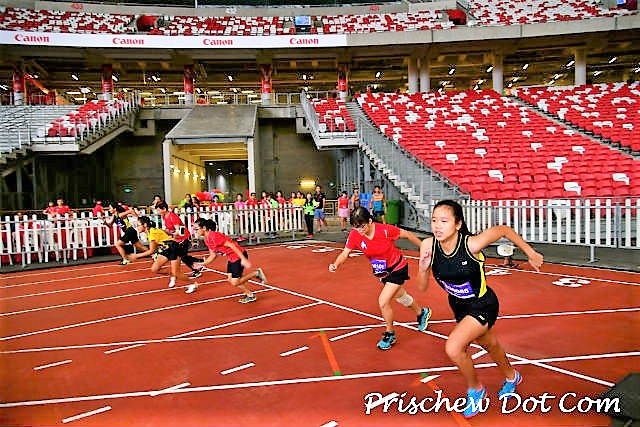
Said the 49 year old bank executive, “I was running with the track and field girls and they were 50-metres ahead of me. The pressure that I felt was mainly from them.”
She added, “But it was a good experience though. I was a sprinter in primary school and I did 100-metres and 200-metres but I have never had the chance to do this after leaving school. Today was the first time that I run short distance since my school days so I wanted to challenge myself and see what is my timing.”
Checking the race village out
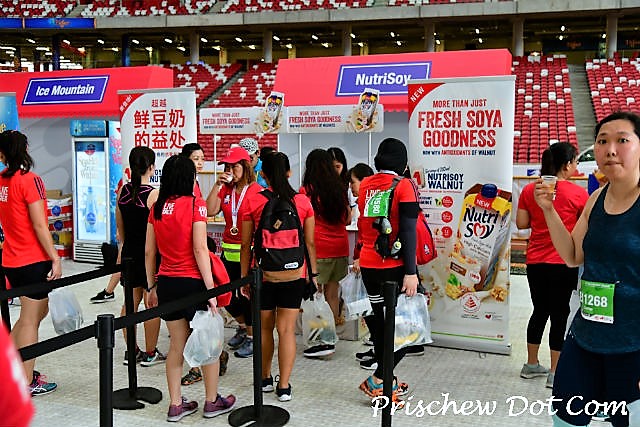
I then used the rest of the time to catch up with some of my running mates, as well as looking around the race village to see what was available.
Being an all-women race, the organisers had really put out all the stops to pamper the female runners.
Powder Room
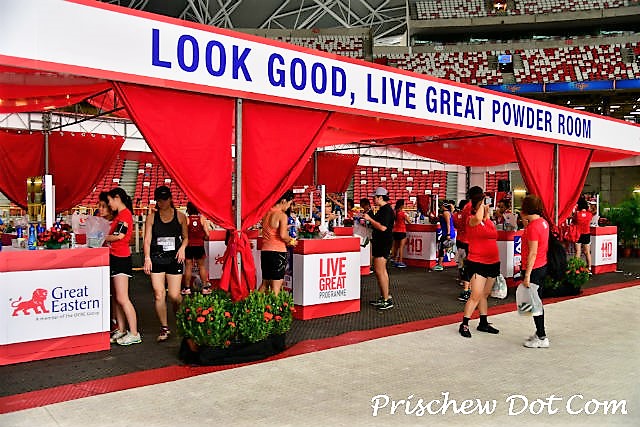
At the race village, which took place inside the National Stadium dome, there was a changing room, as well as a Powder Room where we could freshen ourselves up with beauty products.
Said Eileen, “The powder room was really good for ladies to freshen up and change our clothes.”
Photo Booths
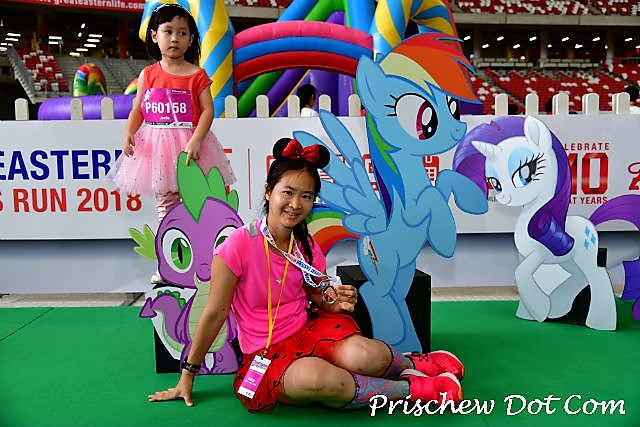
I also spotted many photo booths at the race site, as ladies love taking selfies and photos of themselves – and I took a few pictures over at the My Little Pony Garden as the standees here had been really cute.
Massage
There was a massage tent too, but unfortunately the queues for this was long, so I decided to forego this, even though I could certainly have done with a good post-race massage!
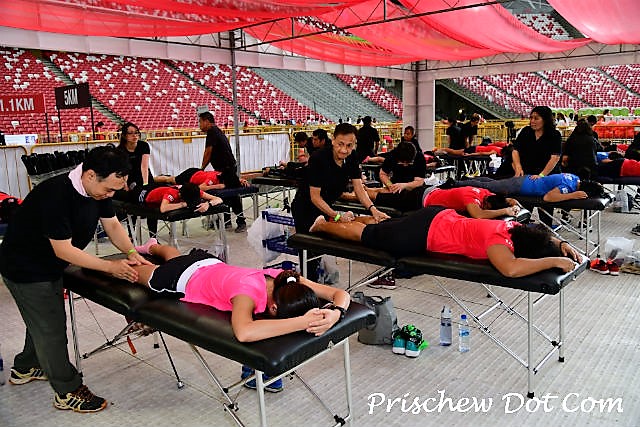
Free Food and Drinks
There were also plenty of delicious freebies provided by the various sponsors of the event and these had included rainbow cakes served in jars, ice cream, fruit juices, sparkling water and soya bean milk.
I thought that the rainbow cakes, which was a new item being given out this year, was particularly beautiful and I could not stop taking photos of it as a result. It looked almost too pretty too eat!

The ice cream was also deliciously refreshing after the run, and so I helped myself to both the strawberry as well as the chocolate flavours.
The past few editions of the Great Eastern Women’s Run had featured yoghurt instead of ice cream, so it was really nice to see that they had brought back the ice cream as a post-run treat this year.
While there had been a queue for these items, this area was well managed because the queues moved very fast and so I did not really have to wait long in order to pick up my items.
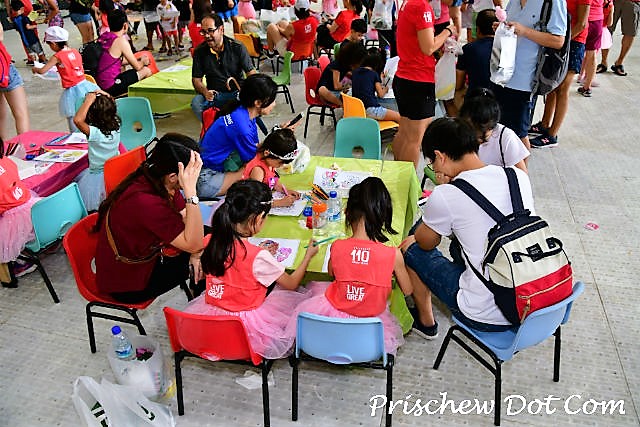
Agreed Eileen, “The queues were not too long, and they were efficient and fast-moving too. With so many yummy freebies, the organiser really knew how to make us feel pampered, as ladies, with everything all being catered for.”
This post-race pampering is always one of the things that I continue to look forward to at the Great Eastern Women’s Run, and is one of the reasons why I sign up for this event every year.
But if only the Great Eastern Women’s Run organisers could have brought in my favourite Milo Van too, then that would really have made my race experience perfect.
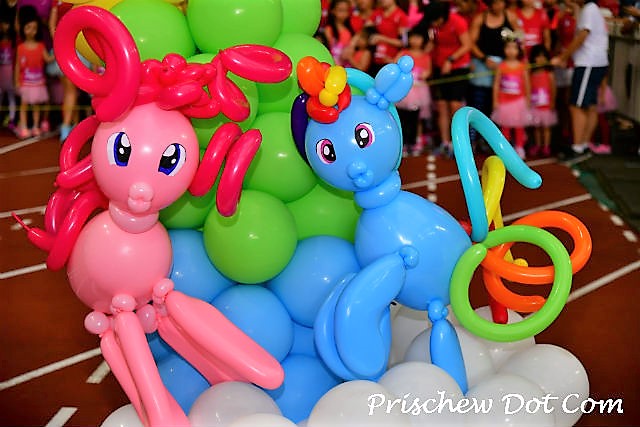
Winners of the 21.1km Elite Event
As well, I also stayed around at the main stage area too, watching the prize giving ceremony taking place for the various categories.
That was when the two emcees, Ross and Kelly saw me sitting there, and they chose that moment to pounce on me… saying ‘hello’ to me personally, right into their microphones, as well as congratulating me on my race finish and also asking me how my run had went.
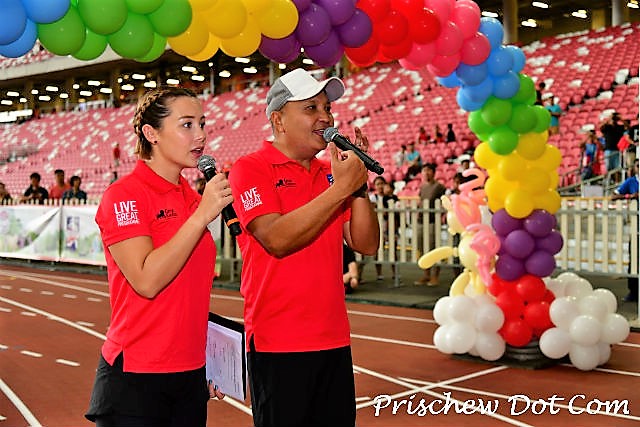
Winning the Elite Open category of the 21.1km Half Marathon was Kasumi Yoshida from Japan, with a timing of 01 hour 19 minutes 01 second. She was surprised by her win.
Said Kasumi, “I am delighted to have come in first. With the rain, I thought that it might be challenging but as I ran, it was comfortably cool. The weather is different from Japan, being more humid, so I did not know what to expect. In the first half, I was able to run aggressively but the latter half was difficult.”
Namjilsuren Semjid from Mongolia and Zhang Meixia from China took second and third place respectively.
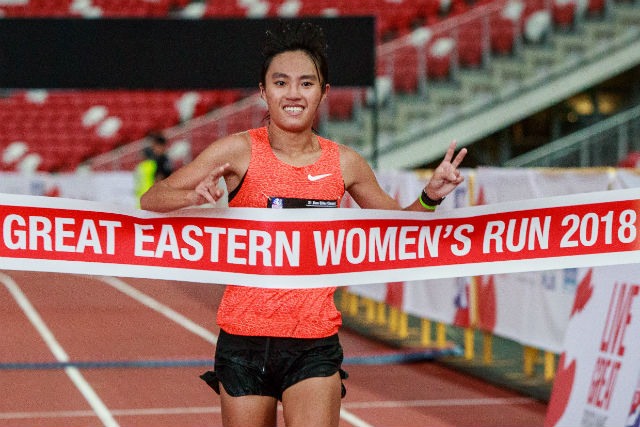
Photo credit to GEWR 2018.
In the Elite Closed 21.1km Category, Mok Ying Rong, 25, won the race with a new personal best time of 01 hour 27 minutes 21 seconds.
She said, “Today’s run was very challenging. I feel that my competitors were really on-form, especially the international runners. This race was a good one for me. It was an opportunity for me to break through my limits and push through for a new personal best for this season.”
Continued Mok, “The route was refreshing too, because I have been doing the Great Eastern Women’s Run Half Marathon for quite a while now, and with this new route, I was inspired to run even better.”
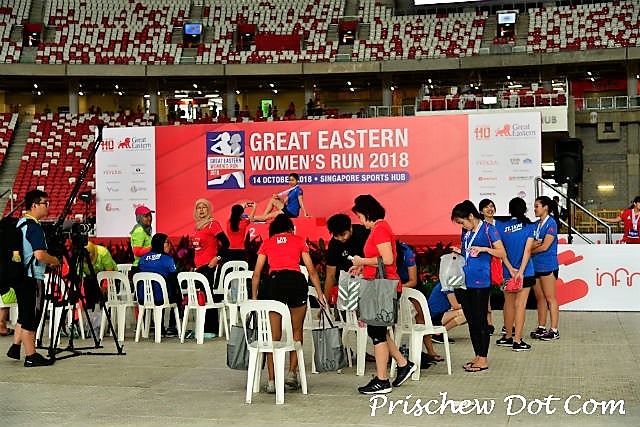
And coming in second and third place respectively, had been Rachel See and Neo Jie Shi.
A Well Organised and Well Managed Running Race
As a whole, I would say that the 2018 Great Eastern Women’s Run had been well organised and well managed, despite the early morning thunderstorm that had threatened to derail everything at the beginning. The organisers certainly had a Plan B.
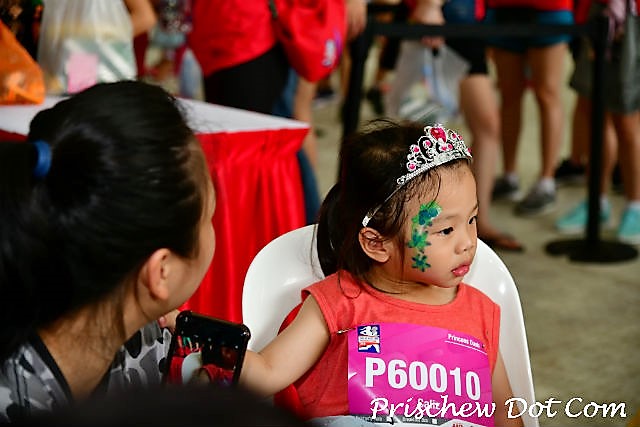
Said Eileen, “I would say that this was one of the best organised runs ever and that the decision making on the part of the organisers was great. Everything was smooth and well-run.”
She added, “This is definitely a run that I always try to take part in, every year.”
Sharing her sentiments was Cheryl, who said, “Female races are always so good because we can dress up how we like and do a fantastic run too – without the males around.”
Event Organisers Are Happy
The race organisers are also quite happy with the event.

Said Keith Chia, Great Eastern’s Head of Group Branding and Marketing, “We are delighted with the great turnout at our Great Eastern Women’s Run, a signature event under our LIVE GREAT programme. Our brand purpose as a LIFE company is to empower the community to live healthier and better and this starts with our employees.”
He added, “This Run has grown from strength to strength and we are pleased that so many women have embraced the importance of a healthy lifestyle. They are excellent ambassadors of our LIVE GREAT motto, championing healthier living to their family and friends.”
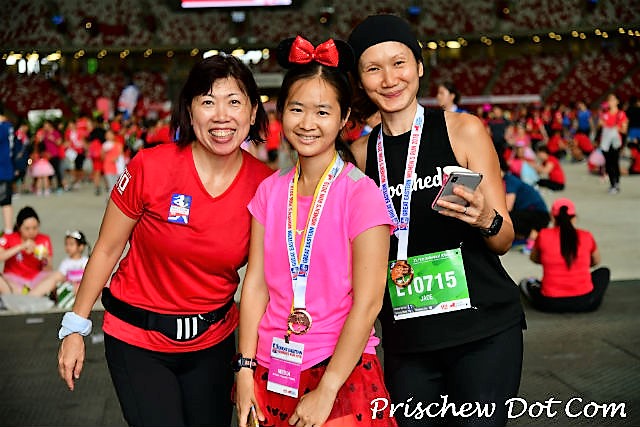
Women are More Gracious Runners
And many of the ladies who took part in the race, are also happy with South East Asia’s largest all-women running event.
Said Eileen, “Being an all-women event, today’s run felt less competitive than mixed-gender running races. I think that females are nicer and more gracious runners.”
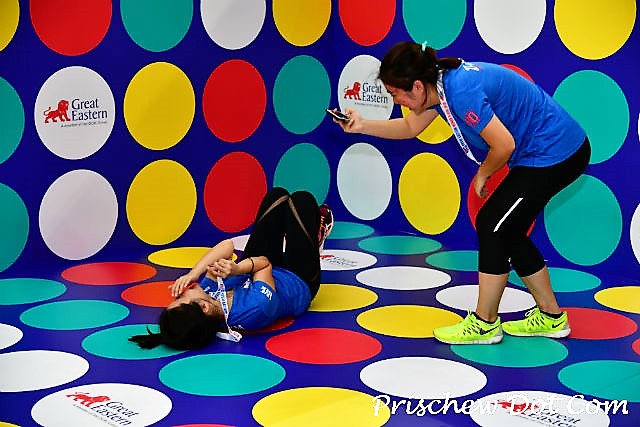
She continued, “Oh. And it’s true too – that guys are generally more smelly and they also seem to sweat more when they run.”
Run Raised S$1,500 for Good Cause
The Great Eastern Women’s Run also raised S$51,500 in support of two women-related causes, the Breast Cancer Foundation and Women’s Health Research and Education Fund.
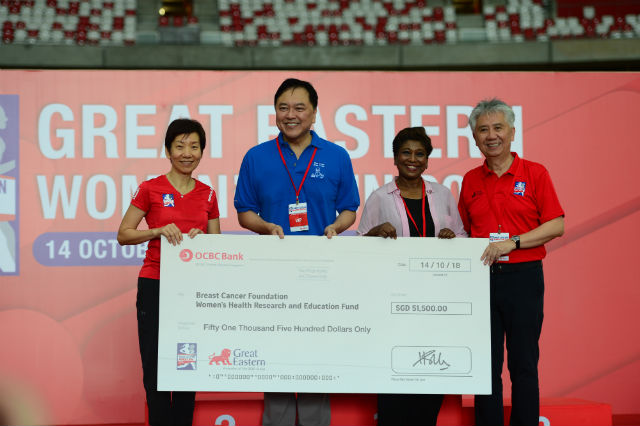
Photo credit to GEWR 2018
And participants chipped in by customising their race bibs and tee-shirts, as well as wore colourful tutus to run in, to support the race causes.
So I certainly wasn’t alone, in wearing my red tutu for the race, then.
Click here to view the Great Eastern Women’s Run 2018 photos in the photo gallery.

Dear Office Incharge,
Kindly help to get run result for following foreign runner, as I unable to retrieve the result for her.
(I am the person to register for her entry for the run)
Name: Ng Siew Cheng
IC No: 670824-05-5032
Malaysian
Email: Jamie.eg.refinery@gmail .com
BIB No: D09822
Kindly advise. Thanks
Thanks & Best Regards,
Siew Yok Eng
Hp: 91082410
Hello Yok Eng, I am not the organiser of GEWR 2018 so I am unable to help your friend retrieve her result.
Could you please email the organiser at info@greateasternwomensrun.com or call them at +65 6248 5777 regarding this matter? Thanks so much.